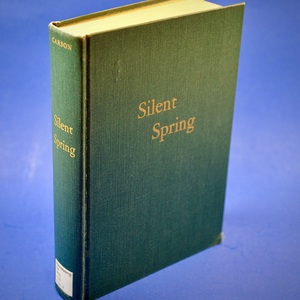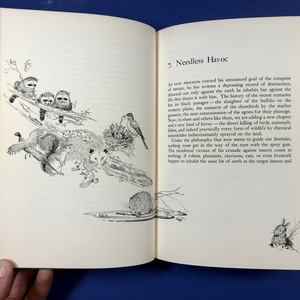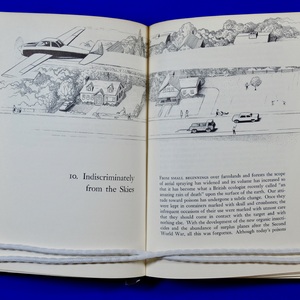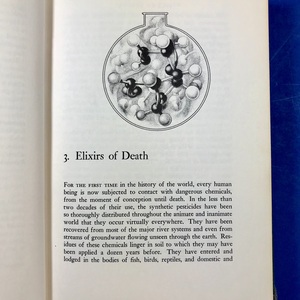-
Title
-
Silent Spring
-
Caption
-
After the publication of Rachel Carson’s Silent Spring in 1962, the American public began to question their use of modern synthetic pesticides, such as dichloro-diphenyl-trichloroethane, or DDT. In the 30 years prior to being banned in 1972, a total of 1,350,000,000 pounds of DDT was sprayed across the United States. Carson reported that birds ingesting DDT tended to lay thin-shelled eggs that would break prematurely, resulting in population declines of more than 80 percent. Despite fierce opposition from chemical companies, Silent Spring ushered along numerous changes, including a reversal in United States pesticide policy, a nationwide ban on DDT in agriculture, and the eventual establishment of the Environmental Protection Agency by those inspired by the text. The book condoned short-sighted tampering with the environment that was pervasive during the Cold War, challenging farmers, companies, and the U.S. government to consider the long-term side effects of their actions. Without Silent Spring, the ban on DDT and ensuing protections, the bald eagle and dozens of other bird species would have likely disappeared from the continental U.S.
-
Creator
-
Rachel Carson, Lois and Louis Darling
-
Date Created
-
1962
-
Publisher
-
Houghton Mifflin and Riverside Press
-
Place of Publication
-
Boston, Massachusetts
-
Rights
-
No Known Copyright
-
Bibliographic Citation
-
Rachel L. Carson, Lois and Louis Darling. Silent Spring. Boston: Houghton Mifflin, 1962. Depository SB959 .C3. ISBN: 0395075068
-
Filename
-
exh-vanishing_Carson_001.jpeg
-
exh-vanishing_Carson_002.jpeg
-
exh-vanishing_Carson_003.jpeg
-
exh-vanishing_Carson_004.jpeg
-
Case Number
-
Causes and Consequences of Extinction
-
Item Number
-
5




